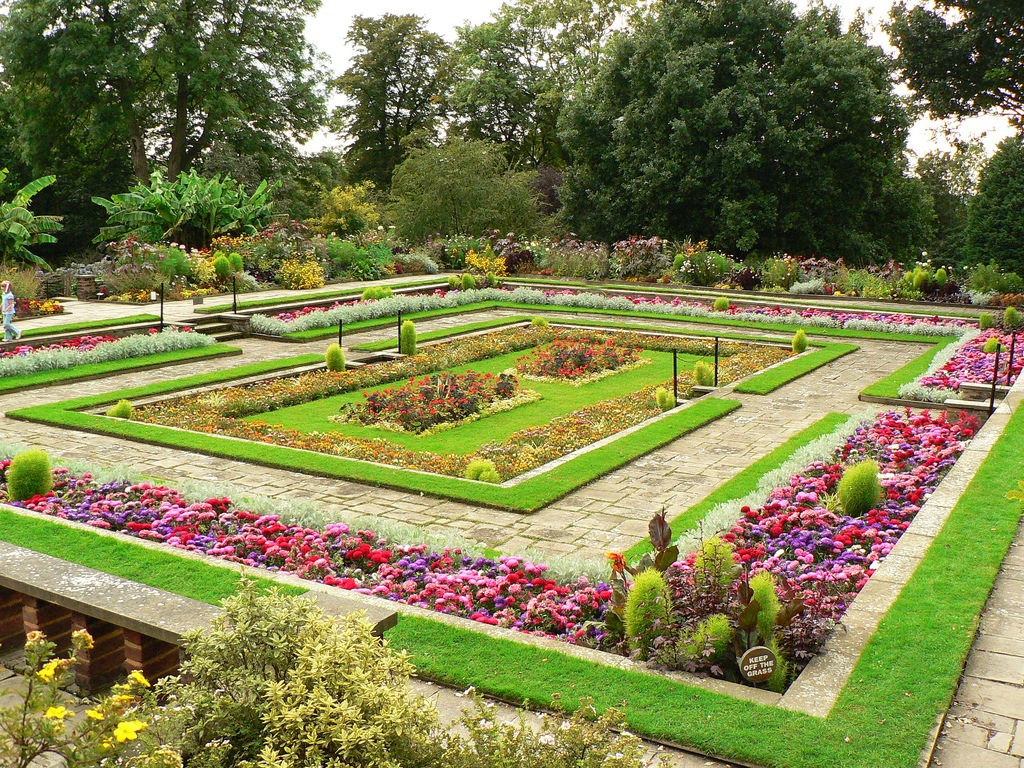(Example of a garden that has been ecologically managed. Photo courtesy of The Canadian and its primer on ecological gardening.)
Ecologically managed gardens often look more unkempt than those tended using traditional methods, and therein lies the problem...maybe. A pair of researchers from Europe recently explored whether gardeners might avoid ecological management techniques because they dislike the resulting appearance, or even because they are worried that their neighbors might frown upon an untidy lawn. The scientists also investigated whether ecological management directly impacts biodiversity and, if so, whether this can be detected by people who see the garden. Cumulatively, the answers to these study questions should help researchers better understand the psychological aspects of wildlife appreciation, thereby potentially allowing them to improve conservation practices.
The researchers conducted their study on a set of 36 focal gardens distributed across the canton of Zurich. Management regimes spanned the conventional-to-ecological spectrum--something that was specifically assessed using questionnaires asking garden owners to describe frequency of mowing and weeding, use of artificial fertilizers and pesticides, and presence/absence of beneficial "features" such as ponds, nesting structures, wood piles, and flower meadows. The questionnaires also collected more general information about the gardeners' psyches; for example, respondents were asked how ecologically-minded they considered themselves to be, and how much they cared about how others perceived their gardens.
(More traditionally managed gardens tend to be closely mown and frequently weeded, and may also be treated with artificial chemicals. Image courtesy of Garden Visit.)
All gardens were subjected to a 75-minute-long census during which researchers counted all native wild species that could be identified without the use of trapping or catching techniques; once the surveys were complete, the scientists also photographed the gardens. These images were later displayed to volunteers who were asked to rate each garden on a scale from "very ugly" to "very beautiful." The volunteers were also asked to select which of the following descriptors applied to each photograph: "species-rich," "species-poor," "colorful," "neat," "normal," "boring," "natural," "wild," "exotic," "special," "artificial," and "chaotic.
Across all focal sites, the ecological gardening index ranged from 0-11; however, the mean was 3.5, suggesting that the bulk of gardens tended to be fairly traditionally managed. Results from the gardener survey indicated that many people felt that ecological gardening was actually easier and less time-consuming than conventional gardening, though they wished they had more background information on this practice. People also indicated that they viewed gardens as important wildlife habitats, and that they would not mind the presence of a "wild" garden in their neighborhood. These are encouraging results given that the scientists found significantly more wildlife species in gardens that scored higher on the ecological management index; the presence of beneficial features (the most common of which were bird boxes and wood piles) was also significantly associated with higher species richness.
(Woodpiles like this one can act as miniature nature reserves; the BBC advocates woodpile construction as one of several outdoor activities that can both promote biodiversity and improve the quality of human interactions with wildlife. Image courtesy of Wikimedia Commons.)
People who viewed photographs of the gardens were generally very positive about their aesthetics, regardless of management regime. That said, there was a significant positive relationship between degree of ecological management and overall aesthetic rating. This appears to have been driven by the presence of particular features (ponds, for instance) rather than actual management regime. Gardens that received the highest aesthetic ratings were described as "species-rich, colorful, and natural." The surveys performed on these same gardens found that there were, indeed, high levels of richness, suggesting that viewers may have been responding, on some level at least, to the diverse array of wildlife shown in the photographs. Indeed, when asked to do so directly, respondents were generally able to identify which gardens were species-rich and species-poor; they could also determine which gardens had been subjected to ecological management regimes. Encouragingly, viewers frequently indicated that they recognized gardens as important habitats, and generally had no bias against the "wild, chaotic, and not neat" appearance of the gardens that had been most heavily ecologically managed.
Cumulatively, these results suggest that it is possible for habitats to simultaneously offer both ecological and aesthetic value, suggesting that it may not be hard to help wildlife by encouraging more gardeners to use ecological management techniques. Currently, though, these regimes are not common across Switzerland, prompting the study's authors to wonder whether people have a "not in my backyard" mentality, or perhaps have simply not yet learned enough about ecological management to think about using this technique on their property.
(Garden ponds can provide breeding habitat for invertebrates and amphibians, and also supply mammals and birds water for drinking and bathing. Image courtesy of Wikimedia Commons.)
Previous work has found that gardeners often mimic their neighbors--a phenomenon known as "garden contagion." This suggests that a few ecological management pioneers might be all that is needed to help this technique catch on, not just in Switzerland, but even across Europe. Increased popularity of ecological management would be good news for humans and wildlife alike: Lightly managed gardens could make significant contributions to the conservation and preservation of a variety of species, while humans could benefit from increased opportunities to see wildlife and experience the many health benefits associated with spending time in green spaces.
---
Lindemann-Matthies, Petra and Marty, Thomas. 2013. Does ecological gardening increase species richness and aesthetic quality of a garden? Biological Conservation 159:37-44.




Tuesday of this week saw the latest team assemble, some of us for the first time at Grosvenor Gardens in London for an induction and training session.tree nursery
ReplyDelete